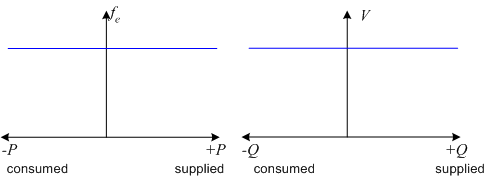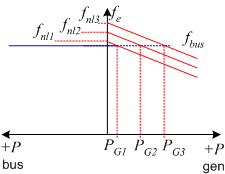Infinite Bus
The infinite bus concept is a simplifying assumption that is applied to buses or nodes with an infinite upstream fault capacity (or an equivalent upstream source impedance of zero). What this means is that the voltage at this bus or node is always constant and any downstream disturbances do not affect the voltage. Obviously, there is no such thing as an infinite bus in practice, but it is a useful approximation to make when modelling a connection to a large utility or grid network (that is, large relative to the downstream system). Such large networks are sometimes called "stiff" networks or systems.
Infinite Bus Concept
The infinite bus is a useful concept that summarizes how most people already view the power grid. It can be applied when the power grid is sufficiently large that the action of any one user or generator will not affect the operation of the power grid.
In an infinite bus:
- 1. System frequency is constant, independent of power flow
- 2. System voltage is constant, independent of reactive power consumed or supplied
An infinite bus assumed in many small electrical applications. As an example, we take for granted that the voltage supply to a residential outlet will be 230 V and 50 Hz: the voltage and frequency are not changed when you turn the TV on.
Frequency-power and voltage-reactive power plots for an infinite bus are shown on Figure 1.
Operating a generator connected to an infinite bus
If a generator is operated off an infinite bus:
- 1. Terminal voltage and frequency (and hence speed) are constant
- 2. The no-load settings of the mechanical system governor can be adjusted to supply more or less power
Other impacts on operation can be best understood by considering the phasor diagram.
Phasor Diagrams
To simplify analysis and aid understanding, neglect armature resistance
Since voltage is constant and assuming synchronous reactance is also constant, changing the power (with the mechanical system) will set E sin δ and |E| will control the reactive power. These effects can be seen be considering two cases.
- 1. Constant Excitation, Changing power
- 2. Constant Power, Changing Excitation



